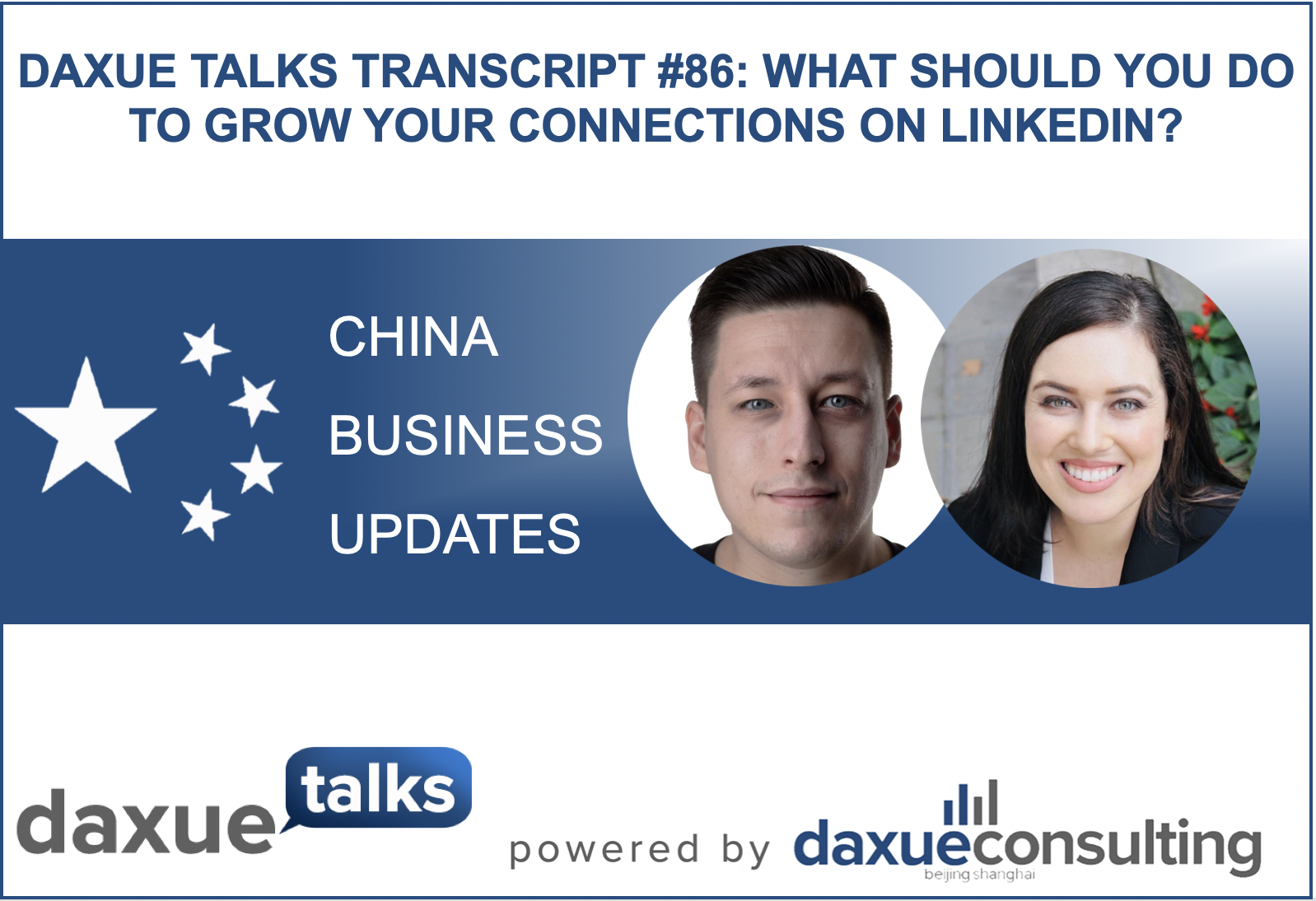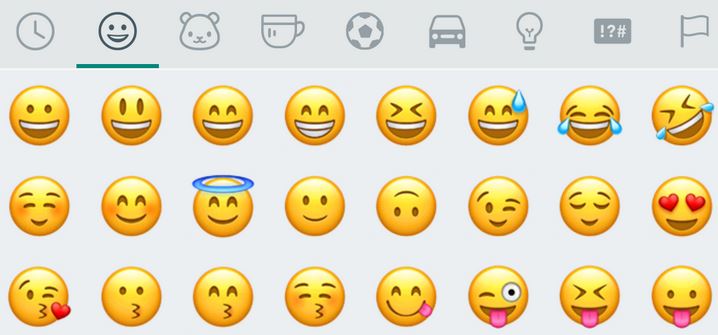Establishing connections on Linkedin
Find here Daxue Talks 86. What are some things you should know before becoming a thought leader on Linkedin? What is the key to establishing meaningful connections on Linkedin? Julien Sicard and Tamar Hela of Linkedin Asia share their expertise.
Full transcript below:
What are some hacks for cold messaging on LinkedIn?
So we use a script, a lot of people that we’ve done workshops with, or even just talked in general were really averse to the idea, but here’s the thing – if you’re really prospecting properly on LinkedIn or any other platform, you don’t have time to customise every message. If you do have time to customise every message then call us, because we’ll put you to work. I mean, that’s just the truth. We’re all busy and so we do have to use a script, however there are different ways that you can really personalise it.
The first rule is to always use that person’s first name or depending on the culture you’re in, maybe you also include their last name, but it’s really important to say “hello John, Hello Susan” rather than just saying “Hey” or “Dear sir or Madam,” make it personalised when establishing connections on Linkedin, and then just start with what we call in marketing, a nurturing sequence, and you really need to make it about that person. So the first point of contact you have 300 characters to add a note when you connect with someone of interest, just use hello John, I saw your profile or I came across your profile, it’s really interesting and I would love to join your network. So, not “I want you to join my network”, I would like to join your network. So again, you make it about that person.
That kind of messaging that we use when establishing connections on Linkedin has a 90% acceptance rate and then once you get them into that next kind of sequence of messaging, again you make it about them. Ask how it’s going. Ask them how there is challenges right now for their business, both Julian and I have had really interesting conversations with people on the messaging part, so it’s not just cold messages, about what they are facing during corona virus, because lots of people are scared and uncertain and they’re having to lay off their staff or maybe even shut down their business soon.
When you have a human touch you can also show if you have value, especially right now, to help someone save their business. Once you create the human touch, it’s not a cold email anymore, a cold message – it’s really getting to know them and then after that you want to see if it’s appropriate to ask for maybe their company presentation or hey, how about we grab a call on Zoom? We use a booking link, so those kind of things are really, really helpful when establishing connections on Linkedin. The unique thing right now is that people are so used to taking Zoom calls that having a booking link set up like that, people will almost always say yes.
How can someone create a post to capture more traffic? Do tactics like emoji’s and broetry really work?
Again emoji’s – what we advise – definitely in the past it really grabbed the attention and again it’s going to be the combination of your grab attention data plus the emoji you’re going to use. One of the greatest – some people complain about that in Shanghai but I just play for example the emergency emoji and I just wrote emergency in Shanghai and then okay – I explained that actually I’m going to give a workshop about LinkedIn. No matter what is your grab attention, the idea is really to again bring the people to interact and to bring certain results, meaning here in the post its going to be the comments and the likes.
What advice do you have for someone who wants to leverage LinkedIn to become a thought leader?
It depends, from what I understood – like human resources or marketing, you have different category. Again the term of thought leader, I think that accreditation of LinkedIn is one thing but what is important is how people talk about you.
I can give you a clear example, here right now community and maybe you have seen her already She runs herself as One Lady, she’s based in Shenzhen and I’m telling you like – even people that we meet offline here, know her. So, for me that shows again that you’re a thought leader. That’s it. Or even for myself when I come back in south of France last year, I went in a bar and – oh, you’re not the guy that has Chinese character on his LinkedIn profile or even in Shanghai – people tell me, oh I have seen you on LinkedIn, your posts have returned or something like that, so I think that’s what makes the difference, a true thought leader – would get to the top – first point and second point people will talk about you. But again I think to be a thought leader is to specifically deliver value and content with value on the specific topics. So let’s say okay – you are an expert of wine, so then explain us the difference between a Bordeaux and a Burgundy, okay you know, share the content not in a technical language. It’s also a common mistake that I see, people using acronym. I can talk about KOL but I mean, if you are Italian you don’t know what is a KOL or if you’re not in social media – so again, the people that can really position as a leader is the people that use the most simple language that weren’t ready to share the value in the content and like that it can again get a more larger audience.
What are some common LinkedIn mistakes?
A lot. But the ones that we’ve seen most often have to do with people’s profiles, that’s why whenever we do workshops, we assume everyone’s kind of like at ground zero, even if they’ve been on LinkedIn for forever, because not optimising your profile is probably the number one LinkedIn sin. We have an opportunity to have a nice professional photo, a lot of people are still posting selfies or like I’ve seen people put their wedding photos on for their profile or maybe like a family reunion picture your mom took. It’s not the place for that, it really isn’t. It needs to be a professional photo because that’s how people create rapport with you visually first.
The next one is, if you think about your LinkedIn profile as a landing page, not your CV but a sales landing page, people don’t take advantage of the top banner photo. So like Julian said, his definitely has a clear call to action, people can scan his WeChat QR code and that’s like another lead generation tactic but people don’t take advantage of that, or even just to make people think again about your brand, whether it’s your company or personal brand. So, people often don’t have that.
Another thing is they’re too vague or obscure in their title; it’s too general so I think people are still very scared to really specific. They think they’re going to lose a lot of opportunities but the opposite is true. You’re going to lose a lot of opportunities if you’re too vague in general. You need to be really specific and tell us exactly what you’re offering us and then overall I would say, again just kind of like being too far reaching. People really need to learn and understand that nowadays especially in digital marketing, the more you niche down, it’s called thought leadership for a reason, the more you niche down, the more you give value about what you are currently offering and you get rid of all the other extra fluff that you’ve done in your life, the more clear it is how you can help solve my problems, because when we’re on these kind of platforms we need to remember that if we’re not solving problems, there is not really a point to be on LinkedIn or other professional platforms. But if you are solving my problems, if you have a service or product, some kind of solution that’s going to save my world, make my life easier, help me to get more clients, keep myself funnel full, that’s what I want to know.
And then finally I would say – just lack of consistency with posting content or even saying – oh I don’t know that person I’m not going to add them to my network – well, it’s not Facebook. It’s not. So, every connection has value, even if they’re not a good connection because they can teach you something. They can teach you – oh well I don’t want to connect with that kind of person. People really need to understand – you do have to massively grow your network if you want to be a thought leader, if you want to really find the right people, because it’s going to take some work and it’s a long-term game.
Any questions? We will find an expert to answer them. Drop your questions in the comments, or send us an email – dx@daxueconsulting.com.




